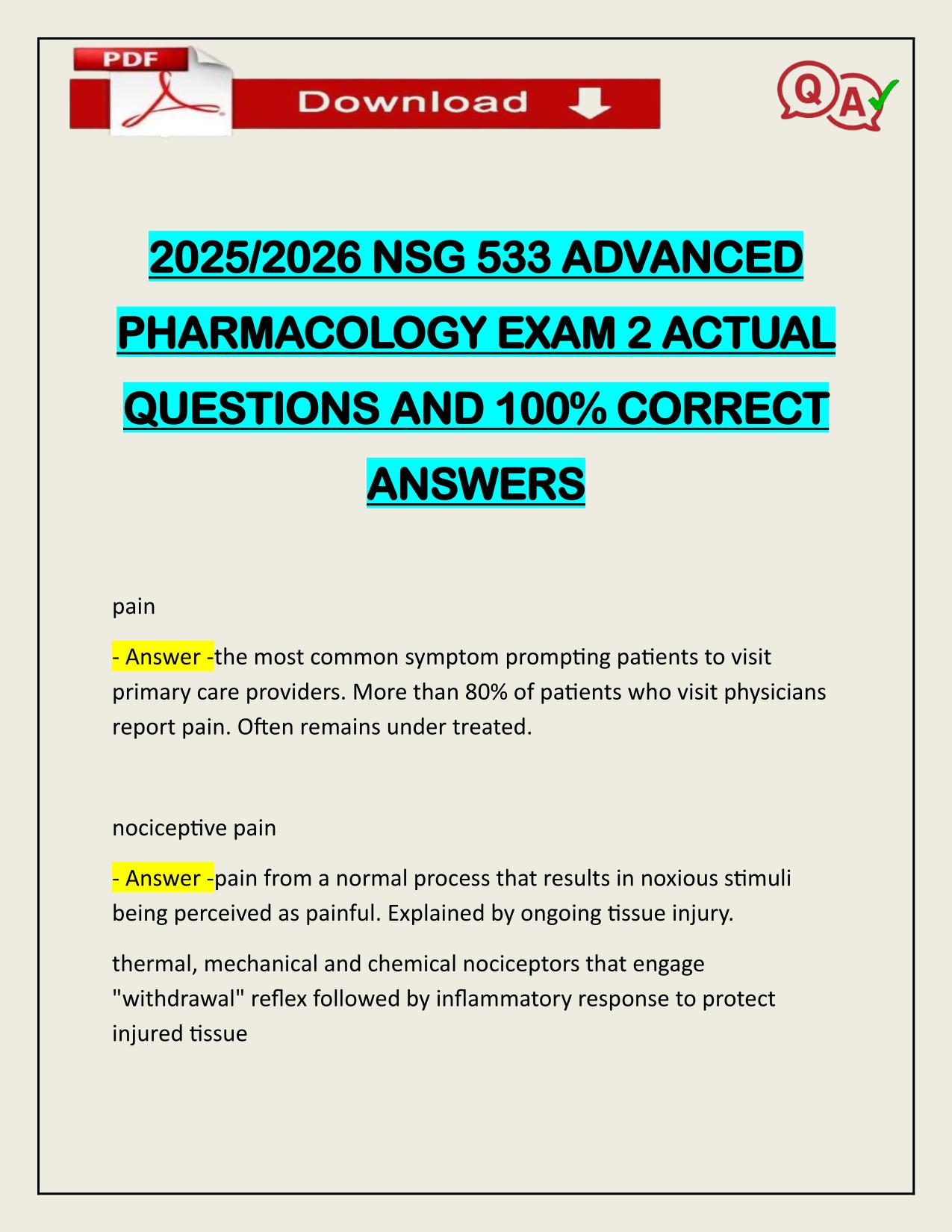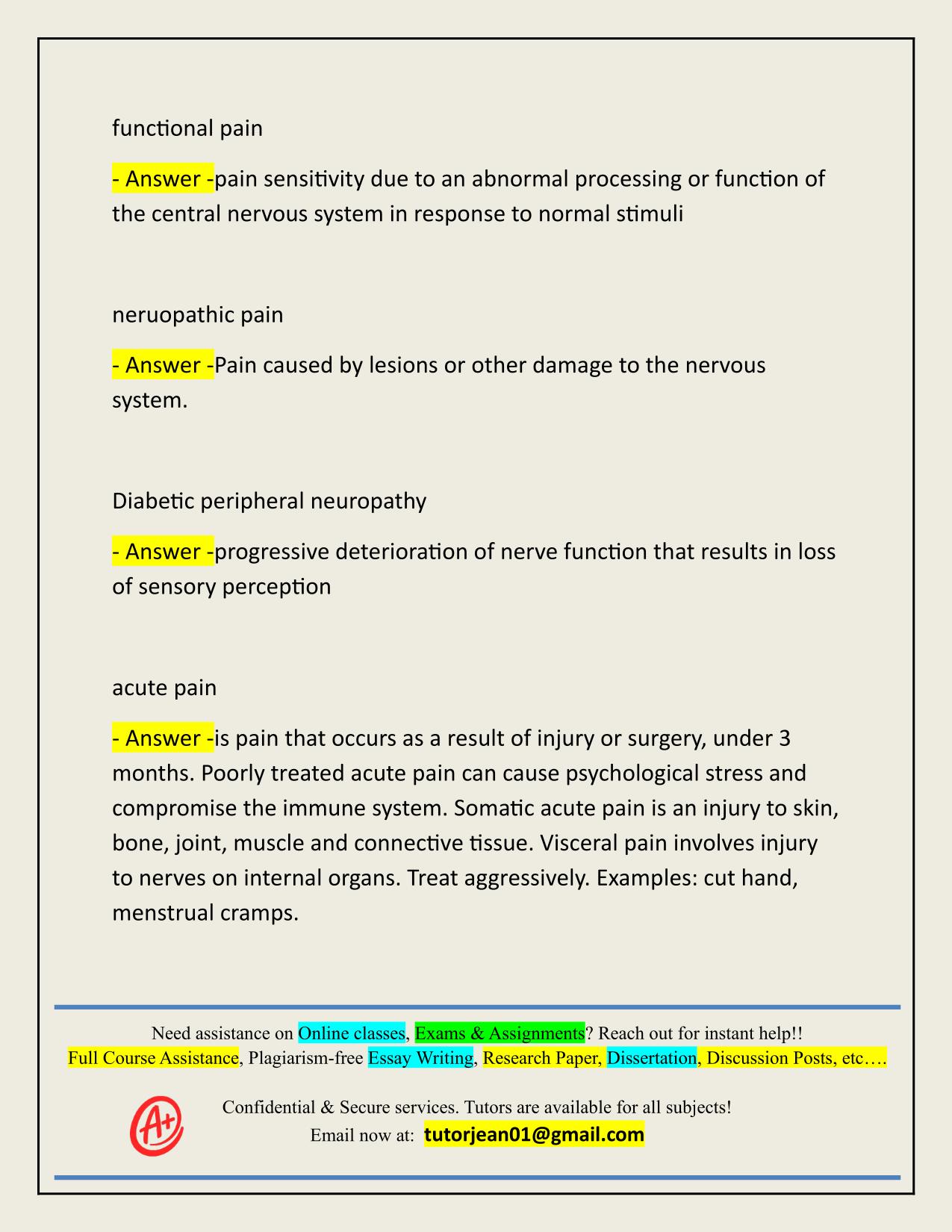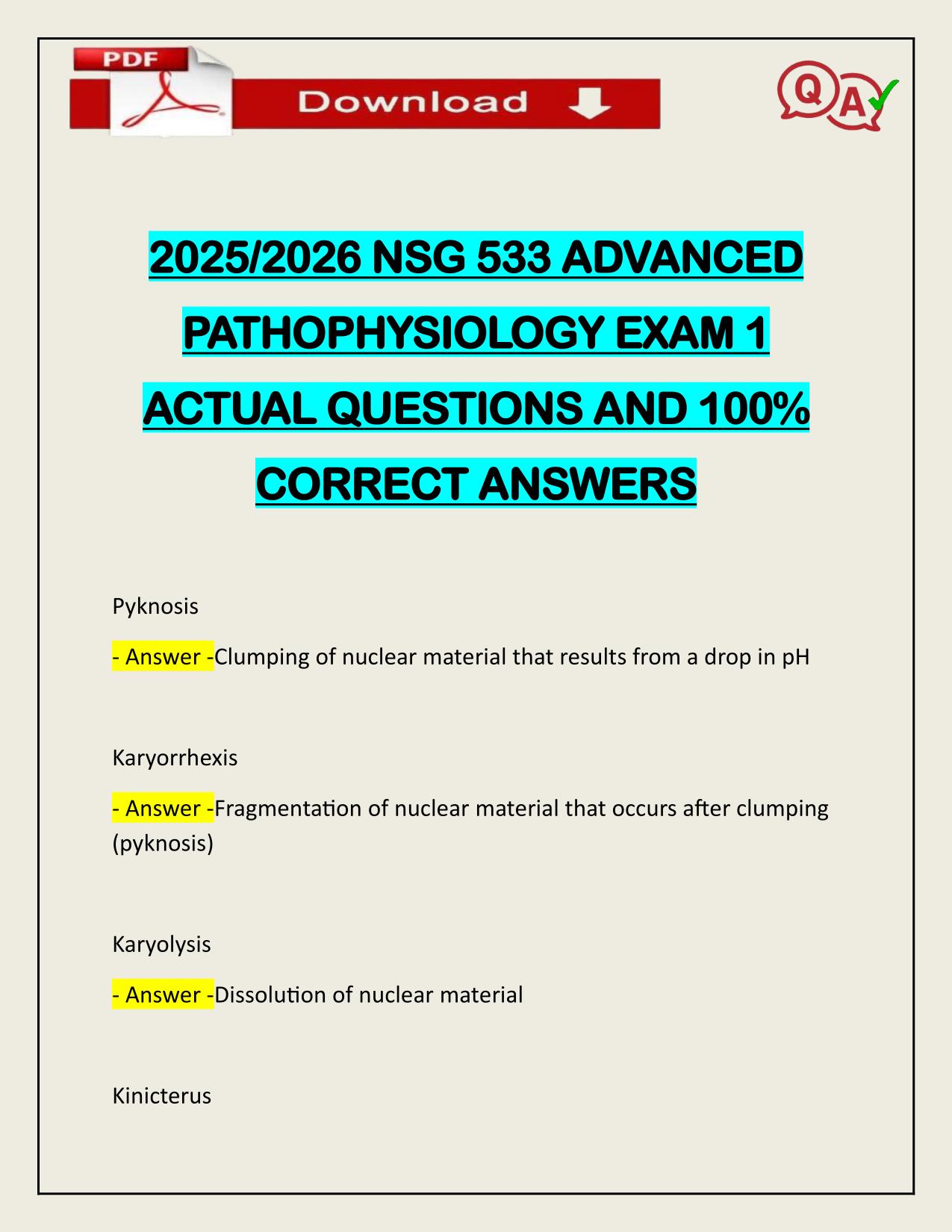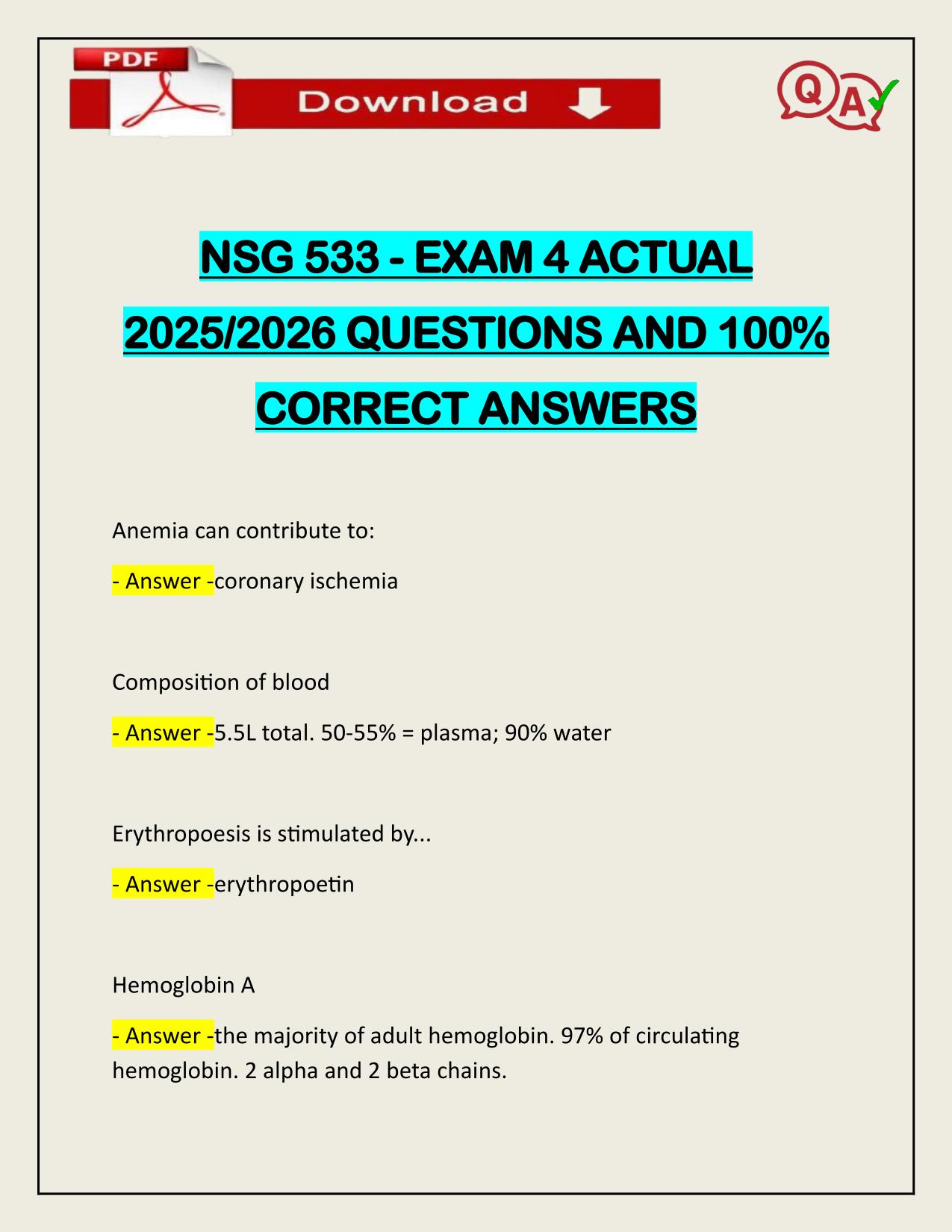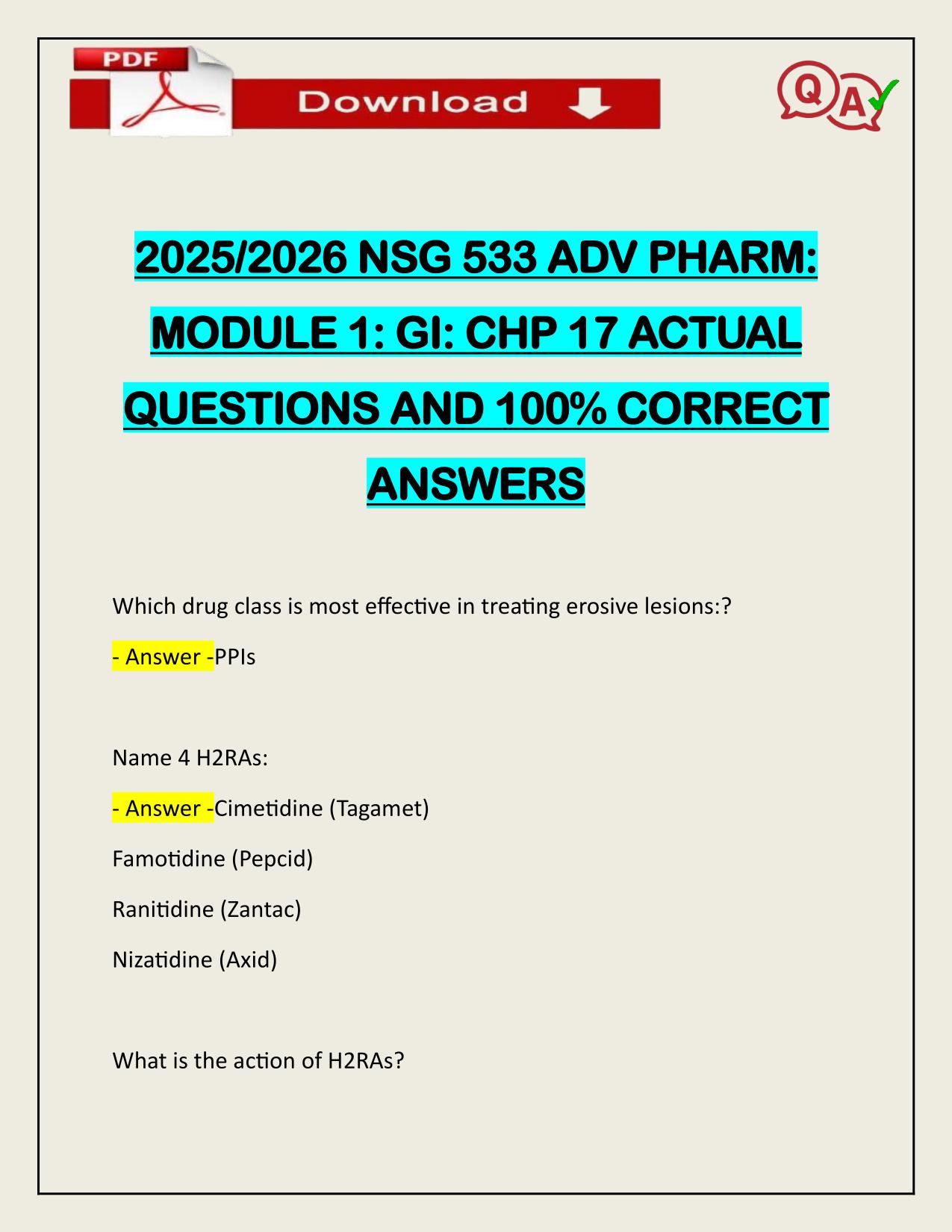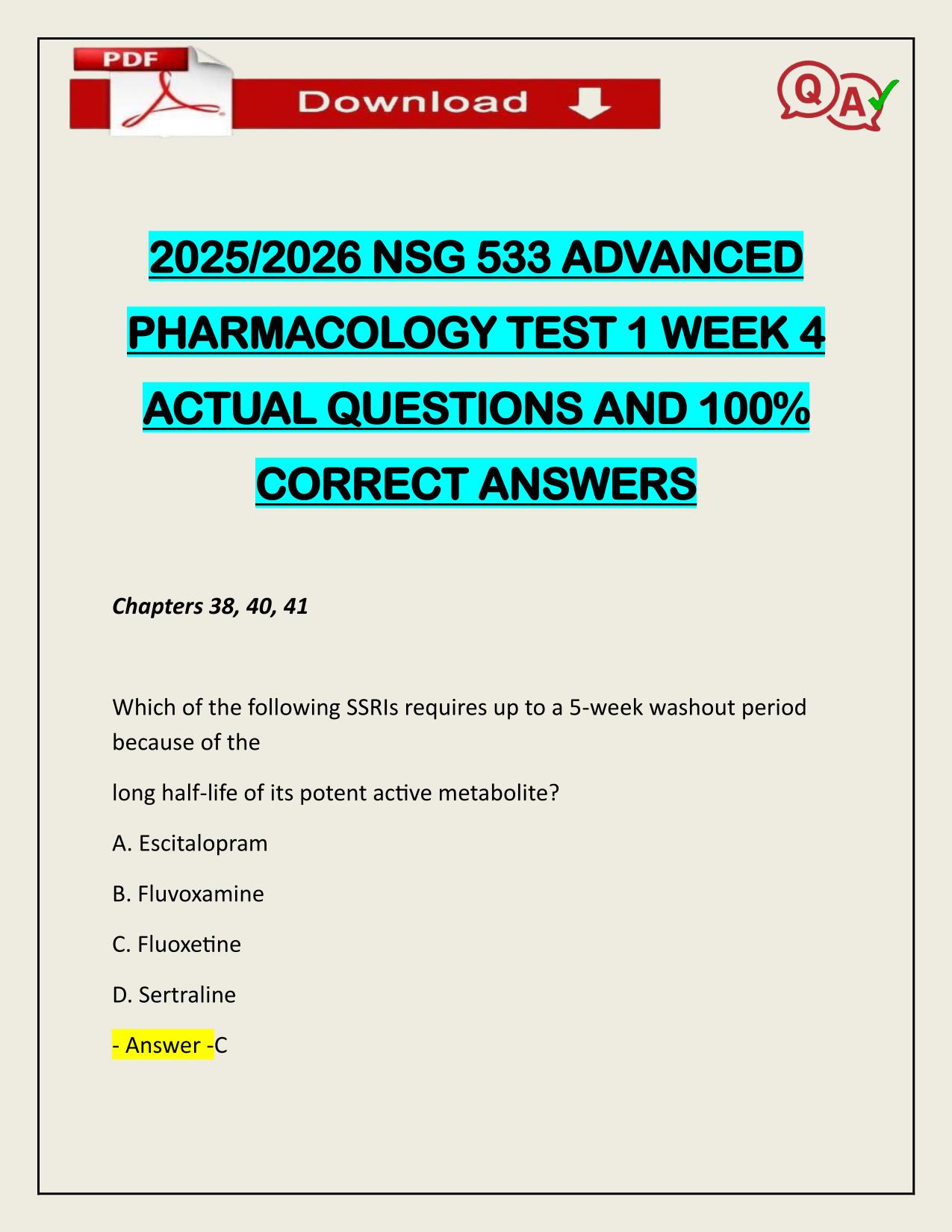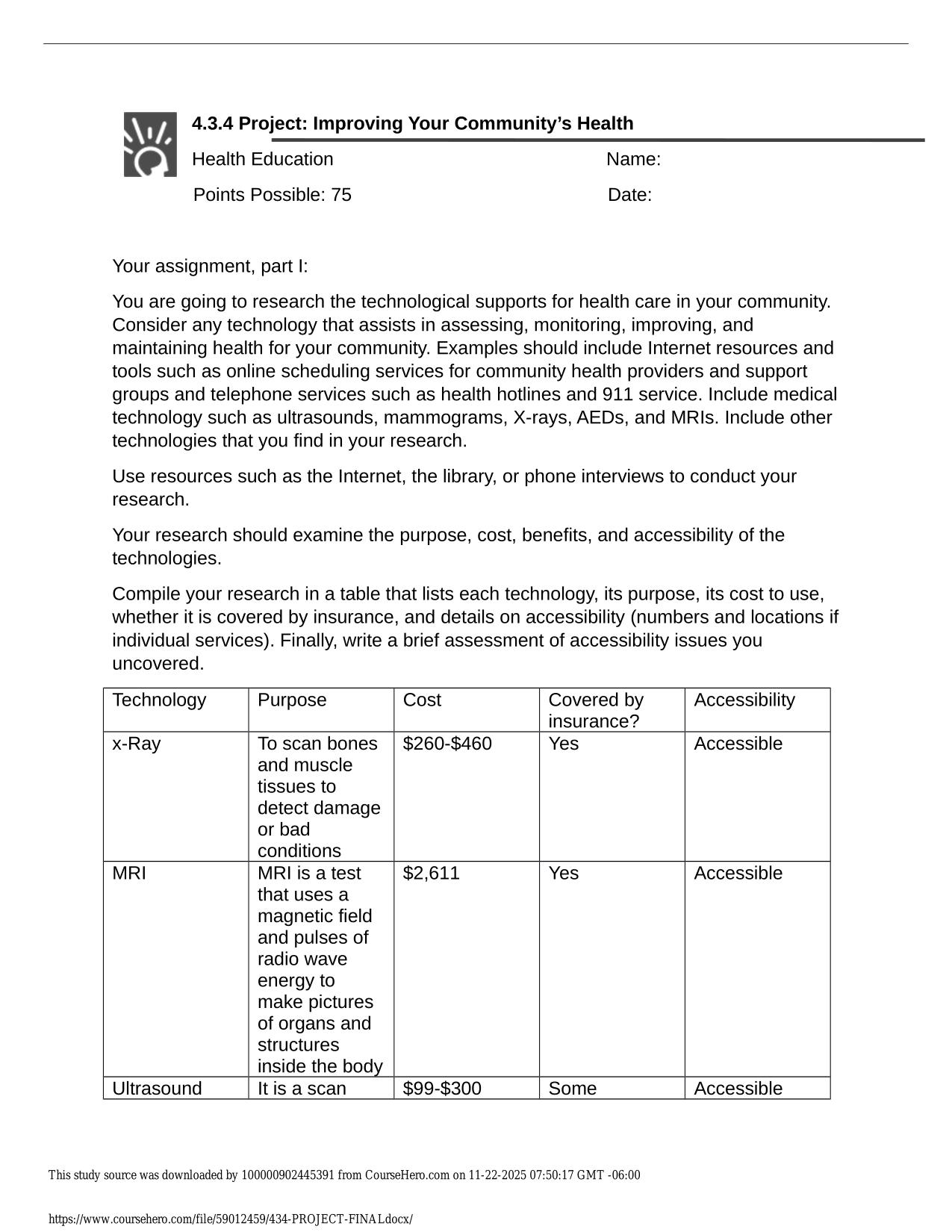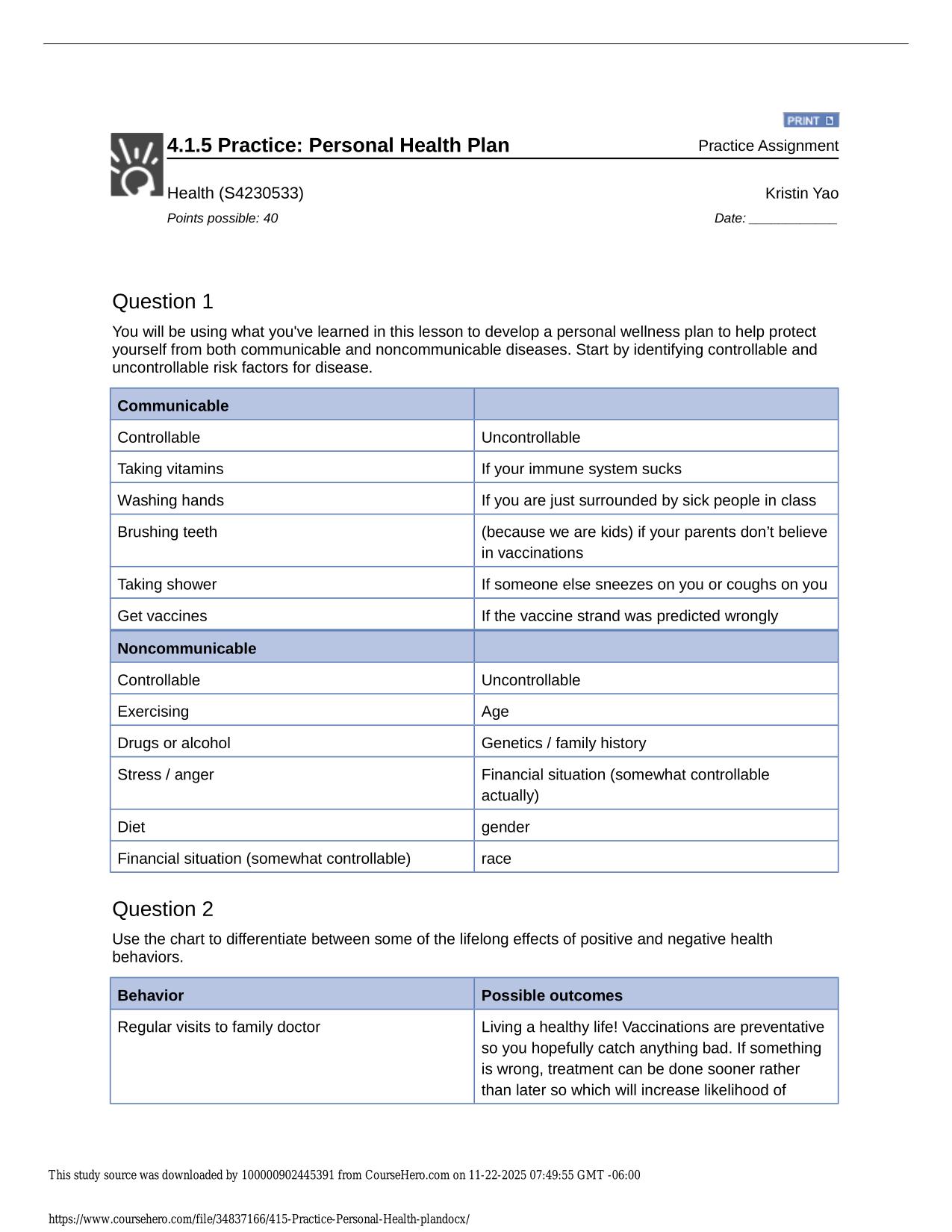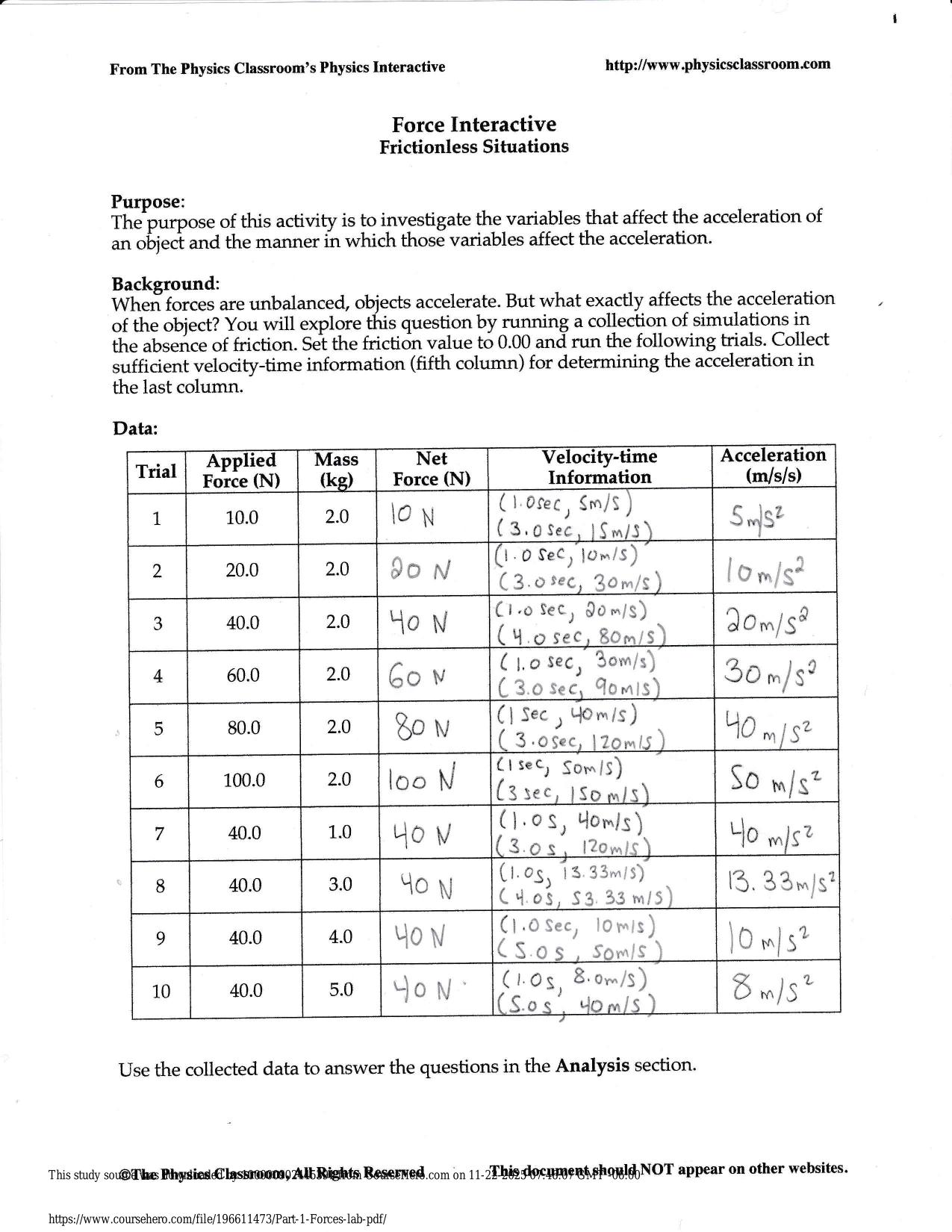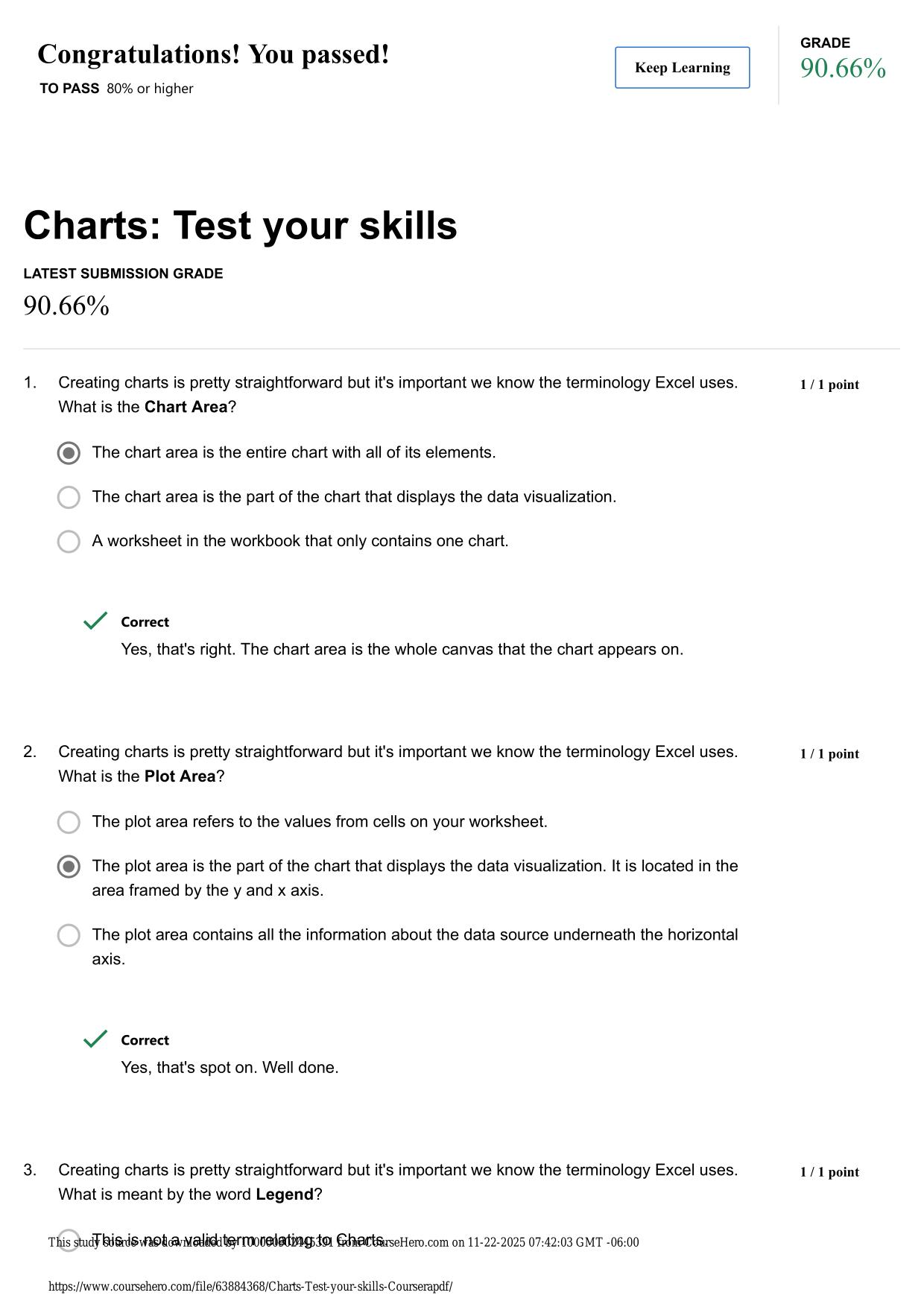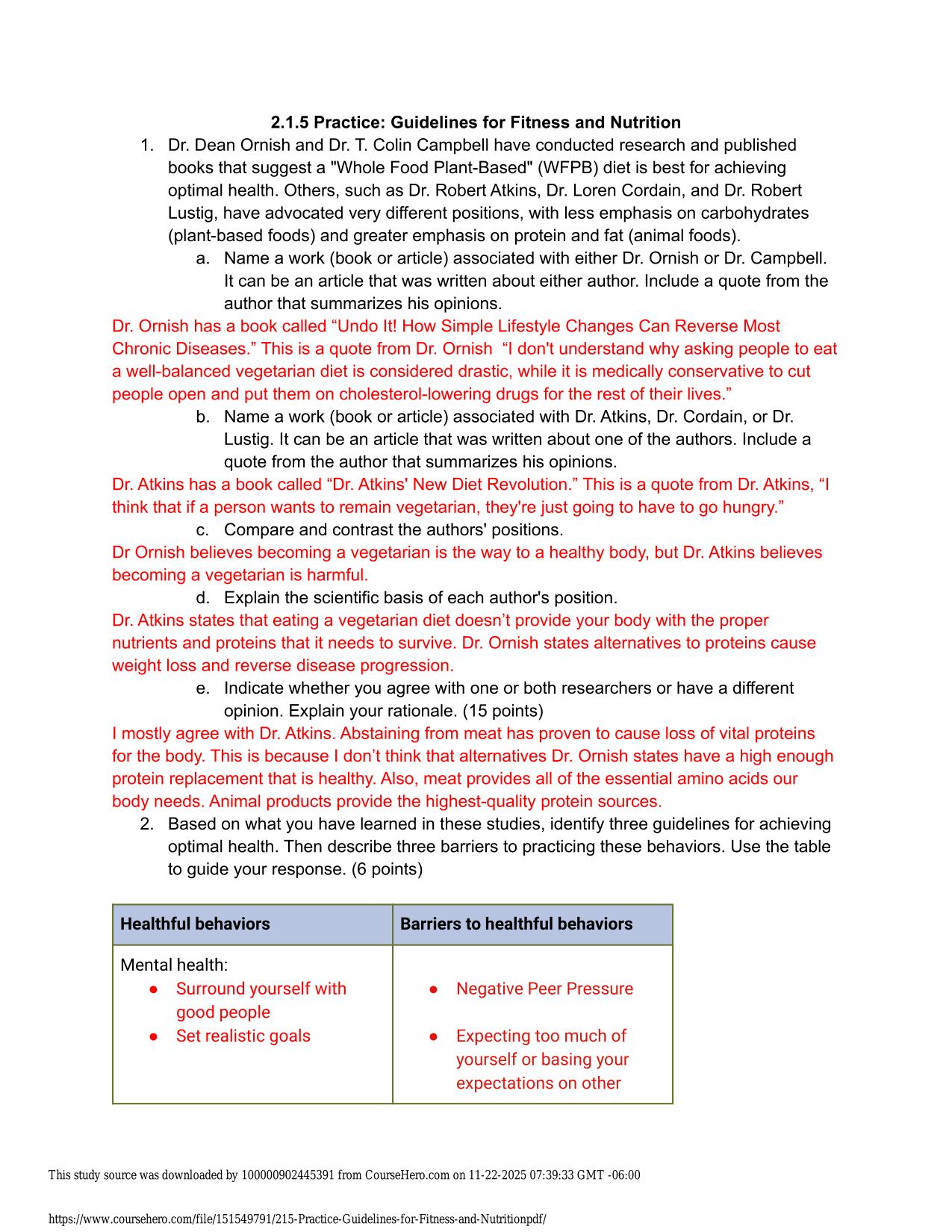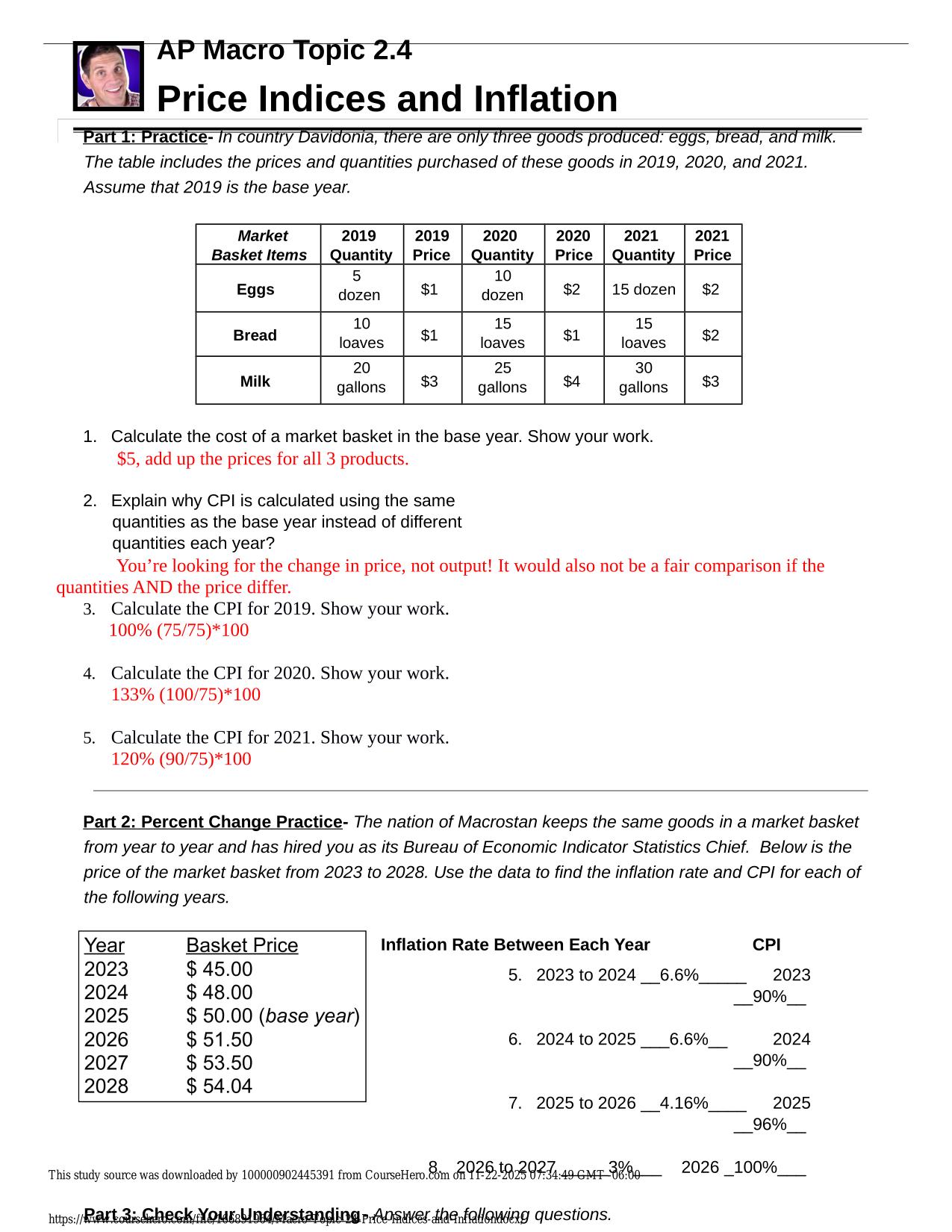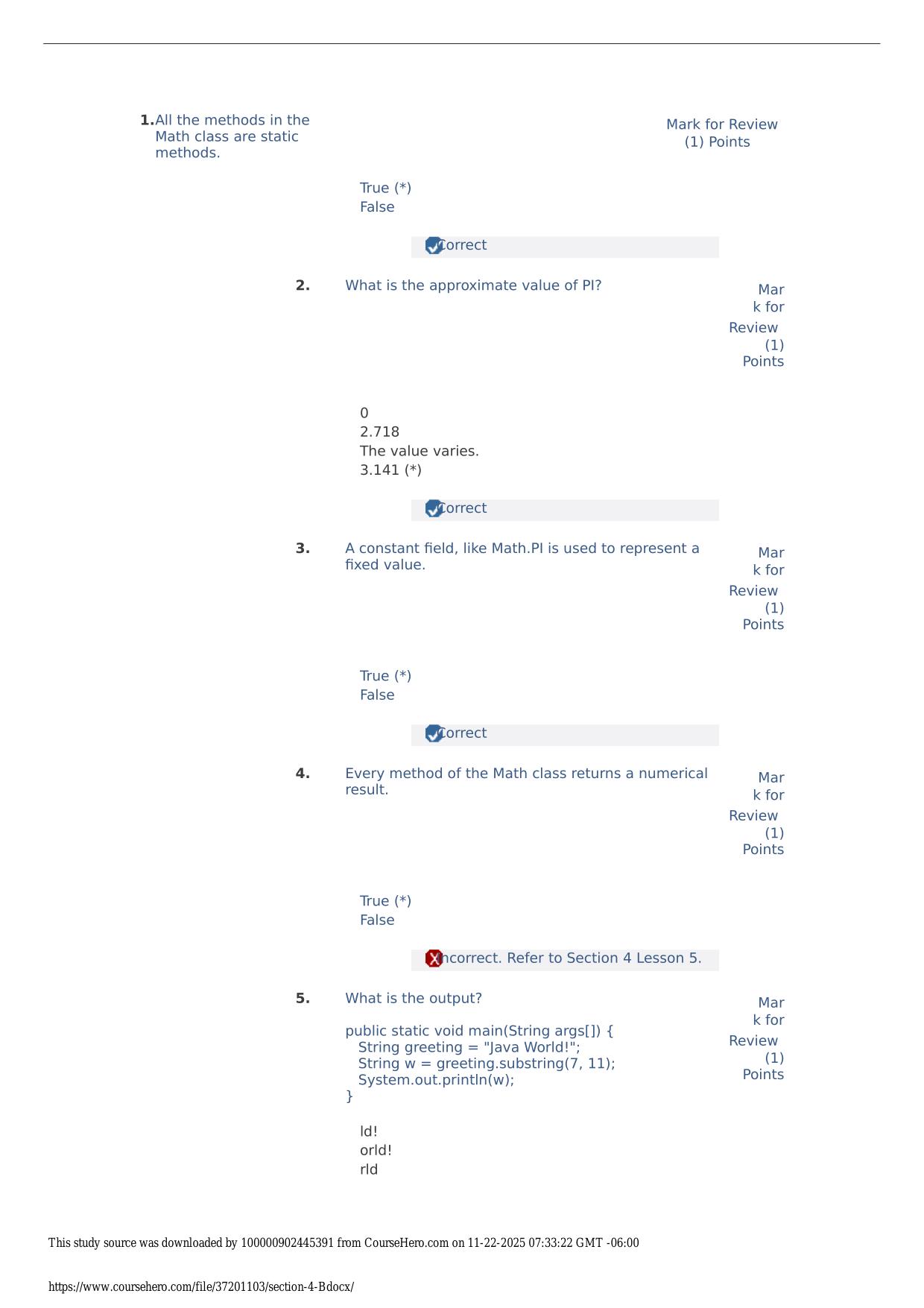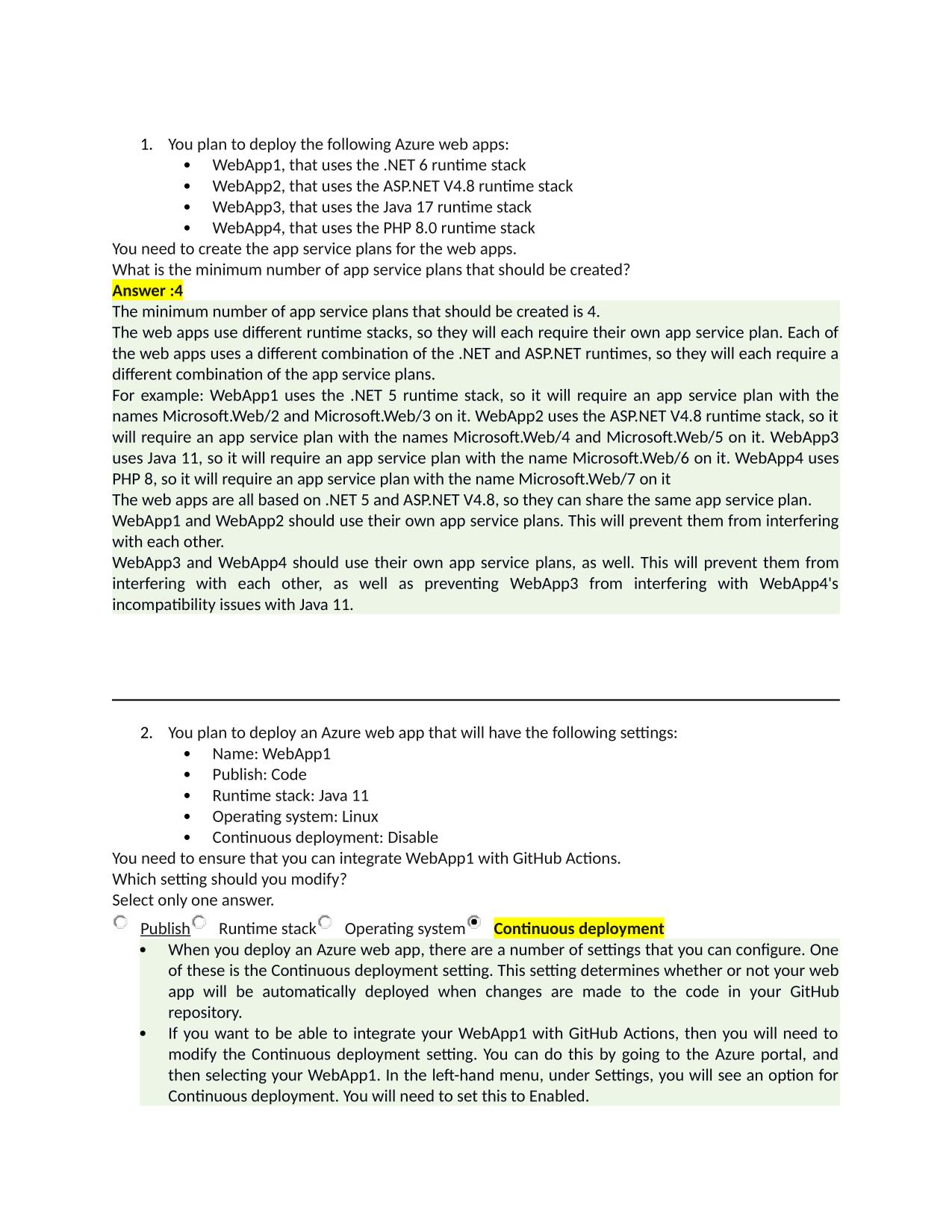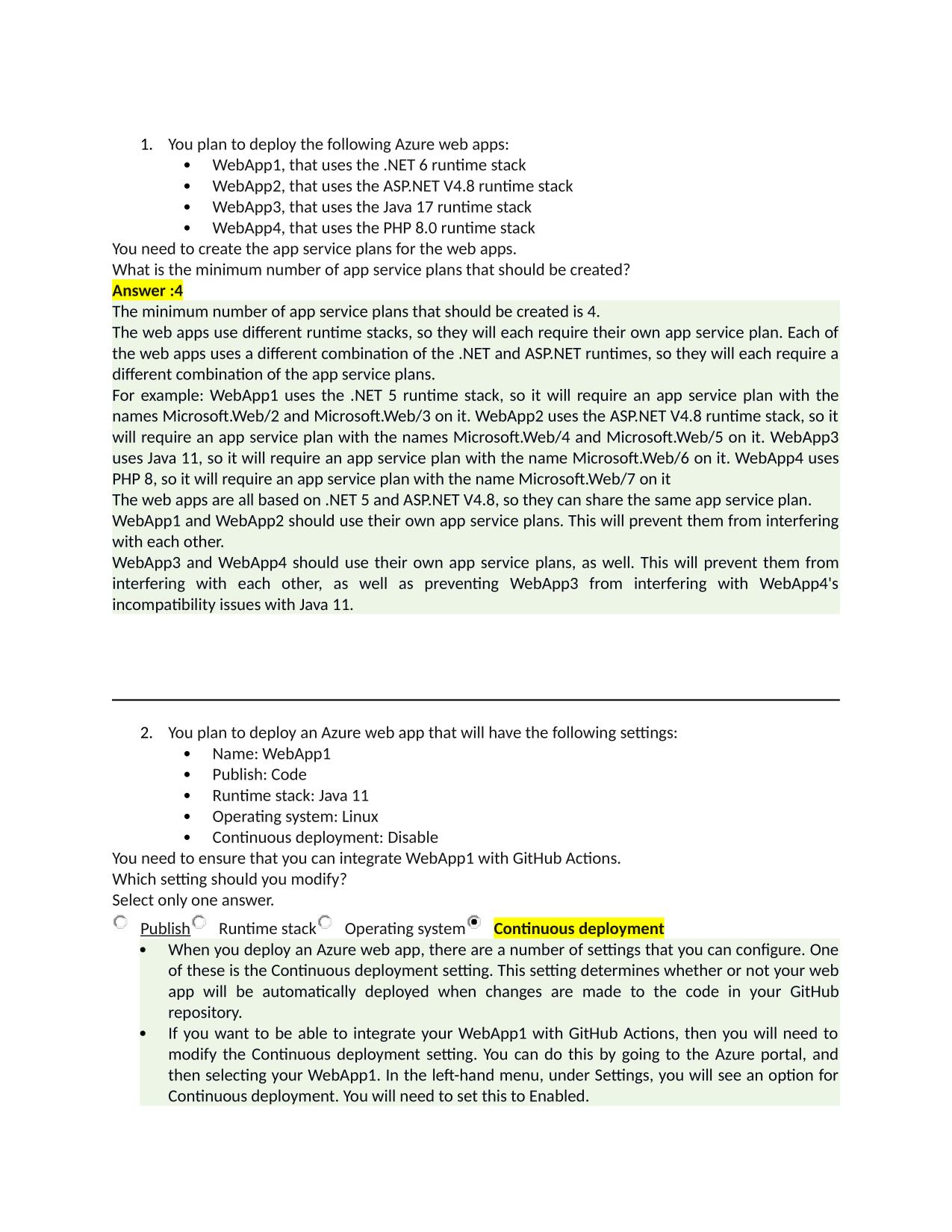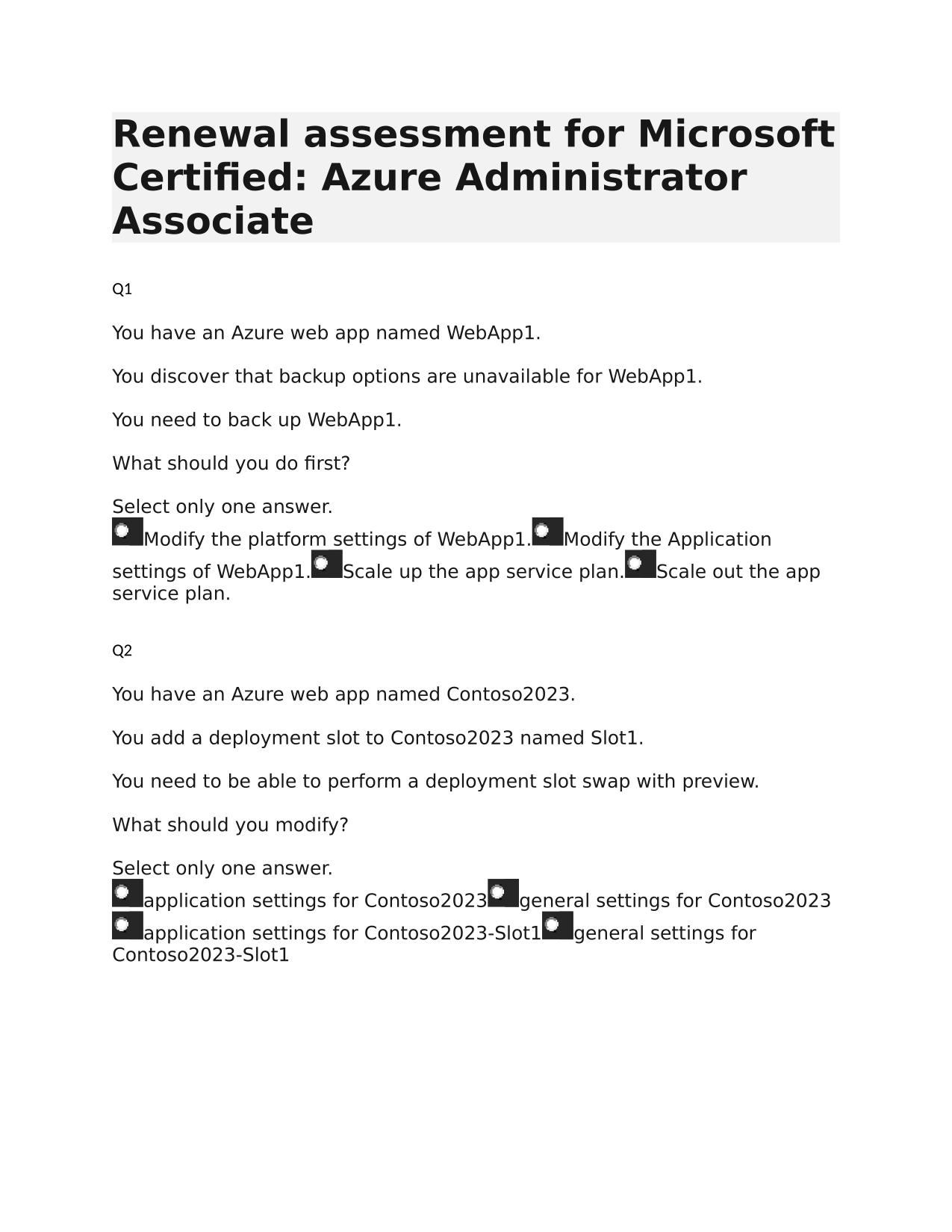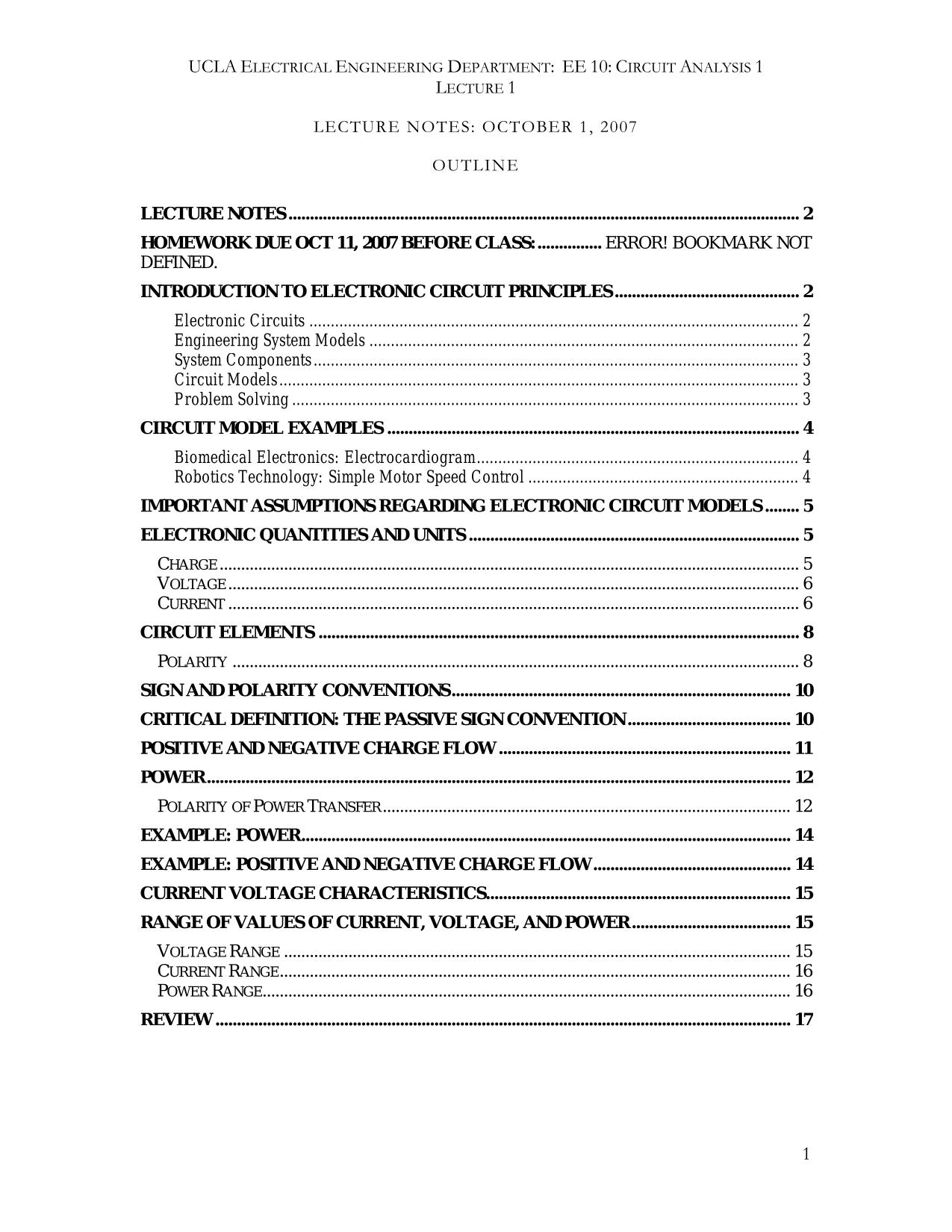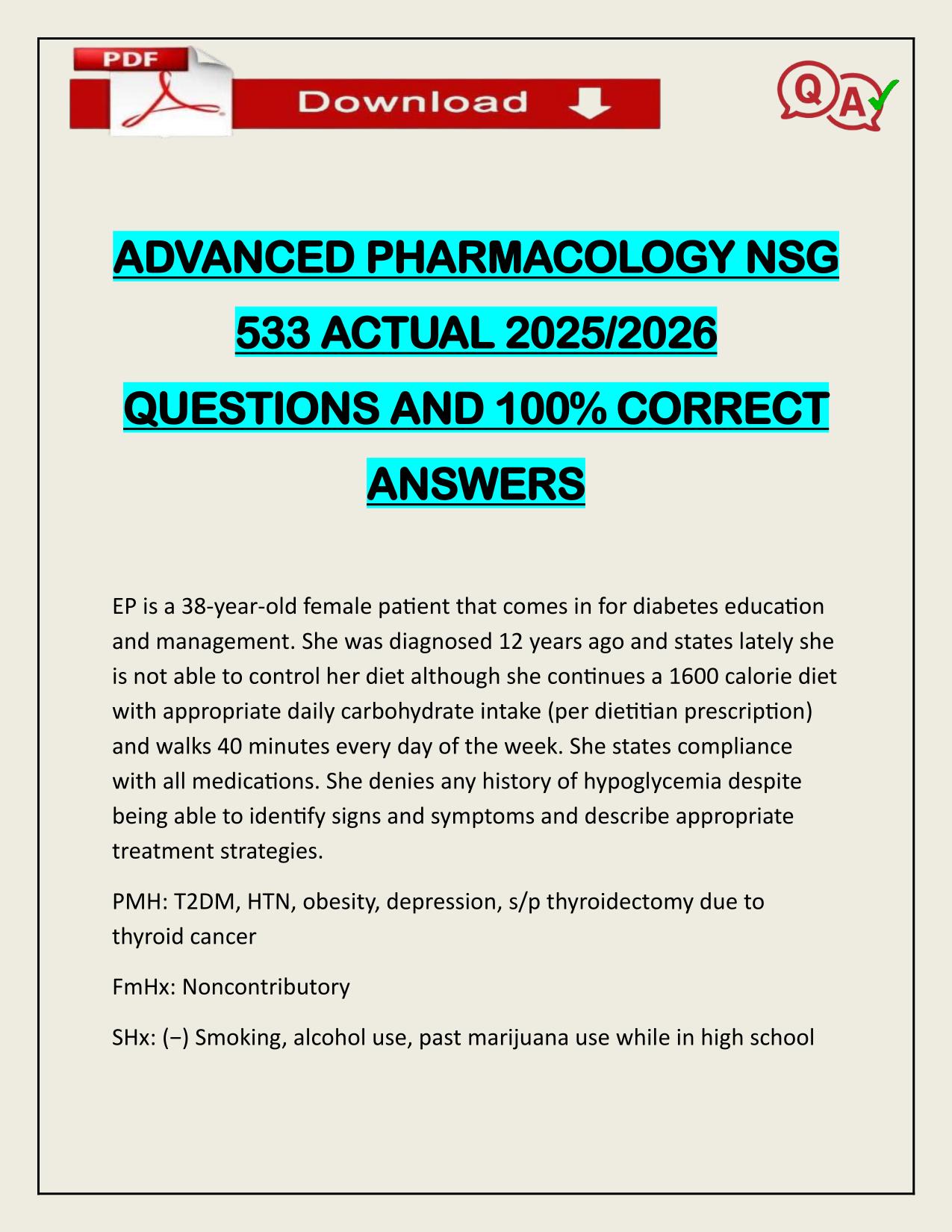2025/2026 NSG 533 ADVANCED PHARMACOLOGY EXAM 2 ACTUAL Q&A
Course:
ADVANCED PHARMACOLOGY NSG 533
Institution:
ADVANCED PHARMACOLOGY NSG 533
2025/2026 NSG 533 ADVANCED PHARMACOLOGY EXAM 2 ACTUAL QUESTIONS AND 100% CORRECT ANSWERS pain - Answer -the most common symptom prompting patients to visit primary care providers. More than 80% of patients who visit physicians report pain. Often rema...
After purchase, you get:
✅ Instant PDF Download
✅ Verified answer explanations
✅ Refund if not Satisfied
✅ Prepared for 2025/2026 test cycle
Overview
The document highlights key principles that repeatedly appear on exam sessions, reinforcing vital knowledge. You're always focusing on high-yield content that has the biggest impact on your score. This strategic emphasis is perfect for busy learners who need to make the most of limited study time. Many students find this focus helps them prioritize their efforts where they'll get the greatest return.
Who Is This For?
Created for exam takers seeking maximum exposure to typical Exam (elaborations) questions, rationales, and scenarios. People often use it to test their readiness before the actual exam. The extensive coverage ensures thorough preparation. directed toward learners who want curated, mistake-free, and carefully formatted revision material for / NSG 533 ADVANCED PHARMACOLOGY 2 ACTUAL Q&A. Users appreciate the attention to detail and accuracy. The clean presentation makes studying more effective and less frustrating.
Related Keywords
Detailed Study Description
Frequently Asked Questions
Document Information
| Uploaded on: | October 27, 2025 |
| Last updated: | November 17, 2025 |
| Number of pages: | 31 |
| Written in: | 2025/2026 |
| Type: | Exam (elaborations) |
| Contains: | Questions & Answers |
| Tags: | 2025/2026 NSG 533 ADVANCED PHARMACOLOGY EXAM 2 ACTUAL QUESTIONS AND 100% CORRECT ANSWERS pain - Answer -the most common symptom prompting patients to visit primary care providers. More than 80% of patients who visit physicians report pain. Often remains under treated. nociceptive pain - Answer -pain from a normal process that results in noxious stimuli being perceived as painful. Explained by ongoing tissue injury. thermal, mechanical and chemical nociceptors that engage "withdrawal" reflex followed by inflammatory response to protect injured tissue |
Seller Information

AdelineJean
User Reviews (0)
Exam (Elaborations)
$10.00
Bundle Deal! Get all 6 docs for just $19.50
Add to Cart
100% satisfaction guarantee
Refund Upon dissatisfaction
Immediately available after purchase
Available in Both online and PDF
$10.00
| 0 sold
Discover More resources
Available in a Bundle
Inside The Document
2025/2026 NSG 533 ADVANCED PHARMACOLOGY EXAM 2 ACTUAL QUESTIONS AND 100% CORRECT ANSWERS pain - Answer -the most common symptom prompting patients to visit primary care providers. More than 80% of patients who visit physicians report pain. Often remains under treated. nociceptive pain - Answer -pain from a normal process that results in noxious stimuli being perceived as painful. Explained by ongoing tissue injury. thermal, mechanical and chemical nociceptors that engage "withdrawal" reflex followed by inflammatory response to protect injured tissue functional pain - Answer -pain sensitivity due to an abnormal processing or function of the central nervous system in response to normal stimuli neruopathic pain - Answer -Pain caused by lesions or other damage to the nervous system. Diabetic peripheral neuropathy - Answer -progressive deterioration of nerve function that results in loss of sensory perception acute pain - Answer -is pain that occurs as a result of injury or surgery, under 3 months. Poorly treated acute pain can cause psychological stress and compromise the immune system. Somatic acute pain is an injury to skin, bone, joint, muscle and connective tissue. Visceral pain involves injury to nerves on internal organs. Treat aggressively. Examples: cut hand, menstrual cramps. Need assistance on Online classes, Exams & Assignments? Reach out for instant help!! Full Course Assistance, Plagiarism-free Essay Writing, Research Paper, Dissertation, Discussion Posts, etc…. Confidential & Secure services. Tutors are available for all subjects! Email now at: tutorjean01@gmail.com chronic pain - Answer -can be intermittent or persistent, more than 3 months. Main affects include a) effects on physical function b) psychological changes c) social consequences and d) societal consequences. Usually involving life threatening diseases such as cancers, aids, progressive neurological diseases, end stage organ failure, dementia. Management should be multimodal with cognitive interventions, physical manipulations, pharmacological agents, surgical interventions, and regional or spinal anesthesia. chronic malignant pain - Answer -Painn is associated with a progressive life-threatening disease like cancer, aids, neurologic diseases, end stage organ failure, and dementia. Goal is pain alleviation and prevention. Dependence or addiction is not a concern. Pain not associated with life threatening disease and lasting more than 6 months beyond the healing period is referred to as "chronic nonmalignant pain." What are some non-pharmacological approaches to pain? - Answer -imagery, distraction, relaxation, psychotherapy, biofeedback, cognitive behavioral therapy, support groups, and spiritual counseling. Physical therapy, heat, cold, water, ultrasound, TENS, massage and therapeutic exercise. WHO 3 step analgesic ladder - Answer -* 1- nonopioid * 2 - opioid for mild to moderate pain * 3 - opioid for moderate to severe pain WHO first step pain ladder - Answer -mild pain/nonopioid analgesics such as NSAIDS or acetaminophen w/ or w/out adjuvants (such as pregablin) .. "soreness." Med examples: apap 1000mg q 6hrs, ibu600mg q6 hrs NSAIDs - Answer -Non-steroidal anti-inflammatory drugs. associated with several clinically significant contraindications and drug interactions. NSAIDS are equally effective in analgesia, antipyretic and antiinflammatory effects. Choice should include STEPS (simplicity, tolerability, evidence, price, safety). If patient fails therapy with an agent from one class of NSAIDs, use of an agent from another class is reasonable. COX2 inhibitors Need assistance on Online classes, Exams & Assignments? Reach out for instant help!! Full Course Assistance, Plagiarism-free Essay Writing, Research Paper, Dissertation, Discussion Posts, etc…. Confidential & Secure services. Tutors are available for all subjects! Email now at: tutorjean01@gmail.com
CourseHero & Studypool Unlocks
Get Unlocked CourseHero and Studypool documents files instantly to your email, simply by pasting your link and clicking "Unlock Now". Learn more on how to unlock here.
